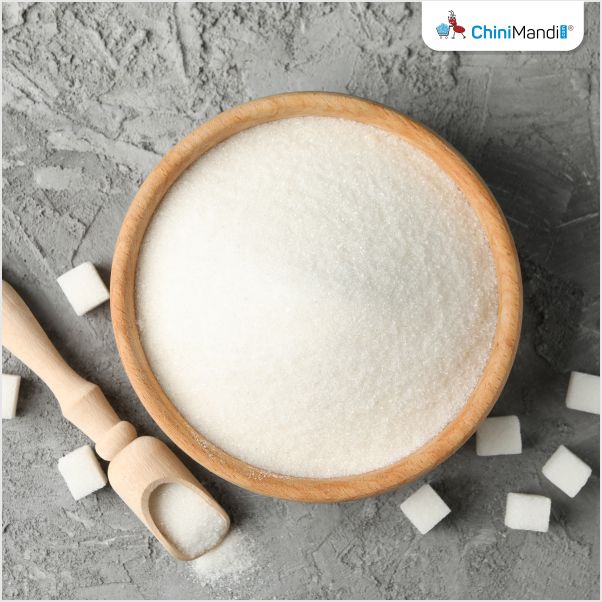India is a serious shipper
Back in the beginning of 2015, the Indian government began to get concerned about rising sugar stocks and rising arrears. Arrears at the end of February were up to $2.6-3.0 billion. Sugar stocks were expected to reach 9.1 MMT by the beginning of October of 2015.
Already at the end of 2014, there was talk that the Indian government was considering some sort of subsidy to help mills export sugar to relieve the stock burden and pay down the arrears. In February part of the government (The cabinet)approved a subsidy of 4.0 Rupees per 100 Kg. No dollar amount was mentioned, that I saw, but the idea was to facilitate the export of 1.0-1.5 MMT. It appeared that no subsidy was forthcoming and the government began to look at a buffer stock and even compulsory exports (That would have worked well…NOT)
Later, in November of 2015, a $173 million subsidy was approved and the amount of the subsidy increased to 4.5 Rupees per 100 kg. The idea at the time was to help export 3.0 MMT. Note how the volume is increasing.
The subsidy was actually given to the farmer to avoid any issue with the WTO at the time. However, by 2018, the WTO’s dispute panel ceased to function and the Indian government just approved a $762 million subsidy directly to the mills.
The subsidy has continued until the 2021 crop year, so what began as an “emergency move” has now become routine, and the size of the sugar stock expected at the end of this month? Depending on who you talk to it is 8.7-10.00 MMT. So despite exports of 7.0 MMT this year, sugar stocks continue to be the same size they were back in 2015. Since 2010, India has only exported less than 2.0 MMT once, in 2013, when they exported 1.261 MMT. Now, this coming year, they might export another 6.0 MMT and this without a subsidy.
So India is now a structural exporter. The 20/21 export number from India might have displaced Thailand for the #2 exporter, only losing to Brazil. Years ago< I used to read about Indian sugar exports and how rudimentary the loading was. That isn’t the case anymore. Loading rates In Kandla is 10,000 tons a day, while in Jaigarh and Angre they are between 7,000-8,000 a day. This is still less than the Rumo terminal in Santos which puts out 15,000 a day or the Copersucar terminal which can put out 3,000 tons an hour. But India now has more port options and there has been increased investment in private ports, which are now displacing some of the government ports.
Those private ports are Jaigarh and Angre, both located in Maharashtra. Jaigarh is owned by a steel company and has a rail link into the port. You also have Hazira and Mundra port in Gujarat, which puts them closer to the mills in Uttar Pradesh. But Hazira is also used by northern mills located in Maharashtra. In Gujarat you also have Kandla port, which is used for bulk sugar shipments. Mundra is more for containers.
Many of India’s ports have also seen more investment in automation, given the labor problems brought on by COVID. But it isn’t just the fact that sugar exports have increased that has seen Indian ports increase investment. India is now the world’s largest exporter of rice and this has increased investment in Kakinada port, which is located on the East coast of India, and where one large coastal refiner exports from. But rice exports also leave through Mundra on the West coast. India has also seen wheat exports surge in recent years as well, so sugar exporters will benefit.
Indian exports rarely exceeded 1.0 MMT up to 2005. They did manage to export 6.0 MMT in 2008, but they weren’t considered serious opposition for Brazil as far as sugar was considered. Now it looks like they will export 6.0 MMT even without a subsidy and the high cost of freight (like in 2008) has made them the go-to origin for Asian demand. With sugar exports becoming routine, efficiency and volume flow will only improve. India is now a serious sugar exporter and even though India is trying to push the sugar mills into more ethanol, sugar exports most likely won’t fall off anytime soon as increasing ethanol production will also see increased cane planting.
I would like to thank my friend Kiran Wadhwana for his help in writing this!
Click here to read Episode 1
Click here to read Episode 2
Click here to read Episode 3
Click here to read Episode 4
Click here to read Episode 5
Click here to read Episode 6
Click here to read Episode 7
Click here to read Episode 8
Mr. Michael McDougall is Managing Director at Paragon Global Markets, LLC, New York, USA. He has been active in commodity futures for 35 years.












